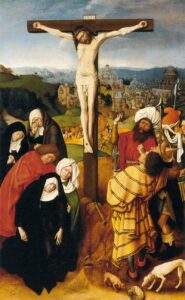Can art change how we feel about the distance between us and the events it portrays?
The meaning of an event can shift depending on whether we think it happened nearby or far away. Artworks often show the same events but use different styles to portray them. For example, Do these styles influence how we perceive the distance between ourselves and the events in the artwork?
Our team explored how people feel about the distance between themselves and Gospel events (like the Nativity). We discovered that when people view icons painted in the Eastern Christian tradition, they feel a greater distance from the events, as if they happened somewhere far away in space and time. On the other hand, when people look at the same events depicted in the Western Christian tradition, they feel a shorter distance. We’ve submitted these findings for publication in the Journal of Psychology of Religion and Spirituality.
![]()
